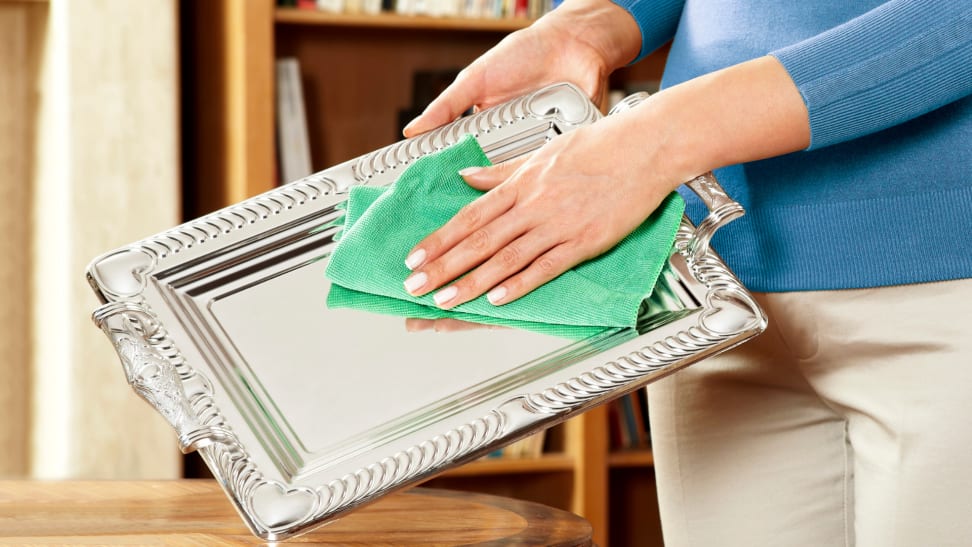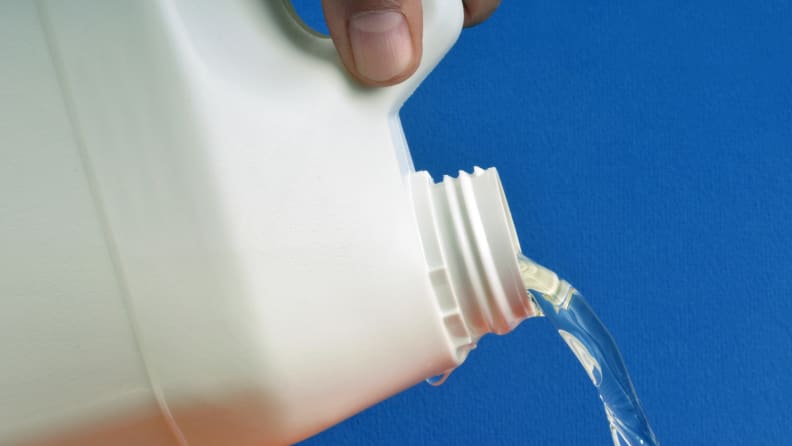 — Recommendations are independently chosen by Reviewed’s editors. Purchases you make through our links may earn us a commission.
— Recommendations are independently chosen by Reviewed’s editors. Purchases you make through our links may earn us a commission.Silver is a naturally occurring precious metal found in the earth’s crust, and while pure silver can be used in everything from money to electrical conductors to medical devices, sterling silver is the metal typically found in things like jewelry and eating utensils.
A good rule of thumb for caring for your silver is the old adage, “An ounce of prevention is worth a pound of cure.” By properly storing your silver, you can reduce the need for cleaning it since air and humidity are silver’s natural enemies.
Jewelry designer Suzie Fromer, who runs Little Hook Jewelry Co. says, “In general, the more airtight your silver storage is, the less tarnishing you’ll have. Tarnishing on silver comes from oxidation (exposure to the air) or the oils on our hands from handling them.”
A Ziploc bag or a cotton anti-tarnish bag are great places to keep your silver jewelry from oxidizing and getting that sooty black film. (If you’ve ever owned anything silver from Tiffany & Co., this is the very reason they package silver products in those signature blue flannel pouches!) When it comes to flatware, you can use a small flatware chest or zippered drawer insert as storage.
You can also add a piece of chalk or one of those silica gel packets that come in things like new shoes, purses, or medications to keep humidity at bay.
The methods for cleaning sterling silver jewelry and flatware are similar (unless your jewelry contains gemstones or other metals, in which case we suggest seeking out a professional who knows how to properly care for mixed metals and precious gems).
Once your favorite silver chain or Grandma’s flatware set becomes dark and cloudy, there are a few simple methods you can use to remove that tarnish.
What you’ll need

Buff tarnished silver with gentle products like soft microfiber cloths and PH neutral dish soap.
- A soft cloth (cotton flannel works well)
- A soft, non-abrasive cellulose sponge
- A soft-bristled brush
- A mild, neutral PH dish soap such as Better Life or Dawn
- Silver polish
- Nitrile gloves (not latex), if you have sensitive skin
Here’s how to clean silver and make it look its best
Step 1: Buff your silver to clean the surface

Sponges and microfiber are perfect for this task.
If wearing gloves, now’s the time to put them on. Add a small drop of gentle dish soap to a sponge or soft cloth that’s been dampened with warm water, and gently buff your silver to clean the surface.
Fromer says you’ll know you’re done when “your cloth no longer becomes black when you’re rubbing the silverware.”
Step 2: Clean the filigree with a brush

Bring the luster back into your filigree with a dedicated soft bristled brush.
If your silver has any ornamentation or filigree, dampen the bristles of your cleaning brush and gently run it along the decoration. Some tarnish can actually enhance silver patterns, so check as you’re removing it to achieve the level of tarnish removal that suits you.
This is why we advise against using chemical dips where you soak your silver to remove tarnish.
“Dip is a poor choice for very delicate designs, as it will erode a bit of the silver more than polish,” says Fromer. “It also will render items ‘brand new’ looking, so if you’re looking to restore or just clean an antique you might not want it quite that pristine.”
Step 3: Rinse in warm water
Run your silver under warm water and thoroughly dry with a clean cotton cloth.
Step 4:
If you want some extra shine or have especially stubborn tarnish, your next step is to add some silver polish to your cellulose sponge.
Apply gentle pressure while buffing, since rubbing too hard can scratch or wear away ornamentation.
Fromer, who repairs and restores jewelry, explains, “Something super-delicate like a silver mesh earring, for instance, should not be rubbed as you could do damage to the piece. Instead, the best option for that sort of piece is to dilute silver polish in a non-reactive bowl and soak the piece for a day or two. Then rinse and dry carefully.”
Once your silver is polished, rinse under warm water, and place it on a clean towel until ready to store.
Things not to do when it comes to cleaning and handling your silver

Contrary to popular belief, silver that looks overly shiny isn't the goal.
As with most materials you clean, there are some popular or internet-fueled practices that can actually be harmful to the surface you’re cleaning—in this case, sterling silver.
Don’t wear rubber or latex gloves, or lay your clean silver on a rubber drying mat, as these materials contain sulfur and may contribute to tarnish.
Likewise, never use chemical dips marketed to clean silver. Doing so can actually erode the silver and give it a too-new look, which detracts from its personality.
It may seem convenient in a pinch, but you should never use abrasive household cleaners or toothpaste to polish your silver, as they can wear away at delicate designs and scratch the soft metal.
Never use chlorine bleach to clean your silver. Chlorine may work well for cleaning some surfaces, but it actually can cause tarnish and corrosion when used on silver.
Many experts advise against putting silver flatware in a dishwasher. While the dishwasher is perfectly fine for your stainless steel cutlery, the heat cycle, which circulates oxygen through the machine, can cause tarnish, and if you place your silverware all together in the utensil holder, there’s a potential for scratching. If you do use your dishwasher to clean your silverware, you should place them in a rack or basket where they won’t be touching to eliminate potential scratches, and turn off the heat cycle and dry them by hand.
How often should you polish silver flatware or jewelry?

How often you polish your silver can be easily determined by how frequently its used.
The good news is that you shouldn’t actually polish your silver often, as over-polishing will dull your silver over time. Silver is a soft metal and delicate details can wear down over time with too much abrasion. We recommend giving your silver a polish to remove oxidation build-up roughly once a year.
The even better news is that the more often you use your silver, the less you actually have to polish it. Friction and general use slows down the oxidation process which means your silver will tarnish more slowly if you use it regularly. But, if you only crack out the silverware on special occasions, proper storage will be your best defense against tarnish.
Related content
The product experts at Reviewed have all your shopping needs covered. Follow Reviewed on Facebook, Twitter, Instagram, TikTok or Flipboard for the latest deals, product reviews, and more.
Prices were accurate at the time this article was published but may change over time.


